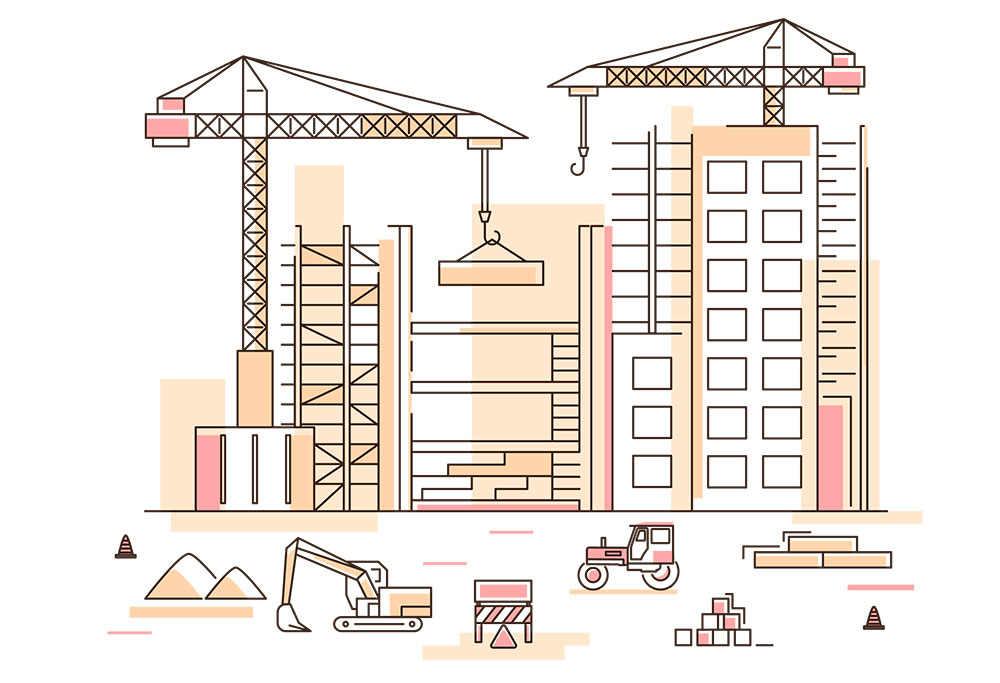
Types of Construction Bonds
Handling a construction project falls under a great amount of responsibility. If you want to guarantee that the contractor and the project don’t suffer any financial loss, then you need to know which are the bonds that can protect it. That’s why we’ll show you the different types of construction bonds.
Construction bonds, also known as contract bonds too, are one of the basic elements in the construction industry. For this reason, it’s imperative for project managers to stay on top of the game and know how these bonds work. That way, you ensure the successful completion of the project.
What’s a Construction Bond and What Do They Cover?
Being a type of surety bond, construction bonds help protect the project owner against any financial loss or disruption in case the contractor fails to meet the agreed conditions in a contract.
You can think of them as a shield and guarantee that covers you from menaces such as:
- Lack of payment
- Performance default
- Warranty issues
Construction bonds have three parties involved: the property owner (i.e. the obligee), the contractor (i.e. the principal), and the surety. Both private and public project owners can add this surety bond to the construction contract as an additional clause.
Many people tend to confuse surety bonds and insurance since both can protect business owners. However, construction bonds work in a different way. How so? Well, contractors must pay these bonds if there is a claim paid to the obligee. Luckily, the surety works on a plan that can adjust to the contractor’s needs.
In other words, construction bonds help both the contractor and the project owner. These bonds can be a real lifesaver when using public funds and they need a backup that the project will run smoothly.
Types of Construction Bonds Every Contractor Needs to Know
Of course, since contractor bonds protect construction companies against many threats and financial losses, there are many options out there. That’s why today we’ll go over the main bonds usually involved in building projects.
When managing a construction project, these are the type of construction bonds to keep in mind:
- Bid bonds which set price bids
- Performance bonds which set specifications
- Payment bonds as mechanic liens
- Supply bonds which ensure materials and supplies
- Subdivision bonds
- Maintenance construction bonds
- Contractor license bonds
Let’s take a better look at each of these:
Bid Bonds Which Set Price Bids

Firstly, construction companies tend to mainly use three types of construction bonds: bid bonds, performance bonds, and payment bonds.
If you’re working on a public construction project, then you’ll likely need to have a bid bond by your side. The reasoning behind this is to help protect the obligee from small and unscrupulous offers. By ensuring a price bid in which both parties agree, then they can work together with the bid bond.
In case the contractor fails to undergo the project, then the obligee can seek compensation by making a claim. This claim will result in a monetary penalty that the contractor will later need to pay to the surety.
Luckily, bid bonds are affordable. In fact, it’s price can range between a couple of hundred dollars to bid bonds free of charge!
Performance Bonds Which Set Specifications

Being among the most common contract bond types, performance bonds are set by the contractor to make sure that they’ll be working under the right conditions and specifications. Additionally, these bonds help ensure that the contractor will abide by the responsibilities stated in the construction contract.
With a performance bond, the obligee doesn’t have to worry about the principal failing to perform his or her duties, no matter the reason. The project owner can make a claim that’ll make up for that performance failure.
Payment Bonds as Mechanic Liens

Lastly, among the most common types of construction bonds, we have payment bonds.
A payment bond guarantees that everyone who worked for the project gets paid for the job done. This payment includes those up and down the payment chain, including suppliers, laborers, and subcontractors.
In case someone goes unpaid, they’re within their right to make a claim on the bond. You can think of these claims as a mechanic liens.
For the most part, these payment bonds tend to make 3% of the contract’s value. Of course, this percentage can vary depending on the contractor’s financial status and credit history.
Supply Bonds which Ensure Materials and Supplies
Although the previous three bonds we explained are usually the go-to options for construction contracts, there are other contractor bonds you must keep in mind.
For instance, there are supply bonds. These bonds’ main reason is to make sure that contractors get the materials and overall supplies they need for the project. Additionally, these bonds are provided by the supplier.
If a supplier were to fail in providing the supplies for the project, the project owner can make a claim for this default. Generally speaking, supply bonds are a must for public projects.
Subdivision Bonds
Subdivision bonds have many names, such as developer bonds or site improvement bonds. These bonds are to help guarantee that the principal will work under the local jurisdiction, as well as it can include local improvements as well.
The bond amount, in this case, is set by the jurisdiction and the estimated time to complete the project. Additionally, subdivision bonds tend to cost around 3% of the bond value.
Some subdivision bonds are necessary for local government projects since they can act somewhat like insurance. They can help protect agencies get the amount of money they need to complete the project in a timely manner.
Maintenance Construction Bonds
Maintenance construction bonds help make up for any defects the work might bring after finished projects. Think of them as warranty bonds. Generally, these bonds often work on public infrastructure.
Also, maintenance bonds have a time limit, which is stated in the contract. Just like payment bonds, these bonds’ costs can vary depending on the credit score and financial history of the contractor.
Contractor License Bonds
Lastly, we have contractor license bonds. Depending on your state, license bonds can be obligatory or not for building projects. As the name implies, these bonds make sure that the contractor is licensed and that he or she will abide under the state’s laws and regulations.
For license bonds, the contractor’s board acts as the obligee, therefore, the board is the one to file the claim in case the principal is working against the bond. Additionally, license bonds tend to be around 1% of the amount of the bond.
Knowing about the different types of construction bonds is a must if you want to ensure that a successful project. Now that you know the main bonds for each situation, you can start working on your construction project without any flaws or financial losses!
